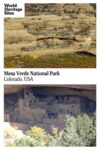Mesa Verde National Park
By Marjorie Turner Hollman
What is Mesa Verde?
Mesa Verde National Park offers access to the largest cliff dwelling community in North America. Built between 1190 and 1280 CE, these cliff dwellings were home to the ancestral Pueblo people. There are about 600 of the dwellings within the boundaries of Mesa Verde National Park.
Disclosure: This article contains affiliate links. Making a purchase through an affiliate link will mean a small commission for this website. This will not affect your price. Privacy policy.
While there are also mesa-top ruins, the cliff dwellings are the highlight that most visitors hope to see. Cliff dwelling sites are visible in multiple locations throughout the park. They include housing, sometimes multi-story, as well as utility spaces and kivas (A kiva is a round sunken structure used for rituals and meetings). Ranger-guided tours of the cliff dwellings must be booked in advance.
Important archeological digs have been conducted at the park, which is also home to over 4000 archeological sites besides the dwellings. Some are now protected from the elements, including the frequent fires that burn the landscape in this area. Paved walkways between the digs make this part of the park handicapped friendly (not totally accessible.) Interpretive signs educate visitors about the significance of the findings in these various excavations.
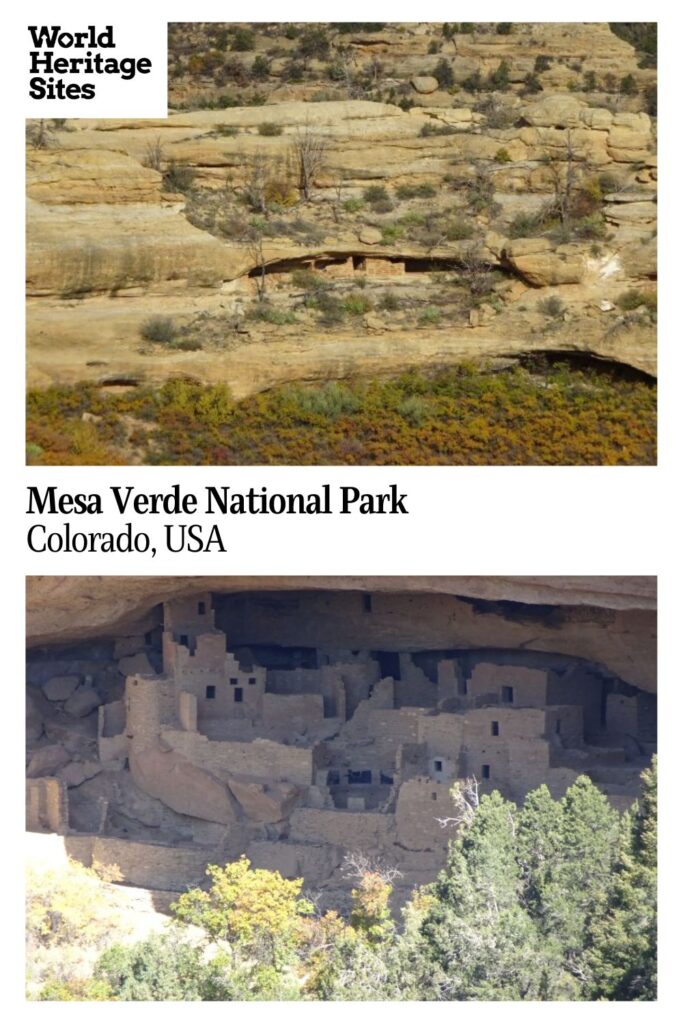
Why is Mesa Verde a UNESCO World Heritage site?
According to UNESCO, the archeological sites within this park support the connection between ancestral and present day native peoples, providing “eloquent testimony to the ancient cultural traditions of Native American tribes.” These sites display the remarkable engineering and resourcefulness of the builders of these dwellings, which have been preserved nearly intact.
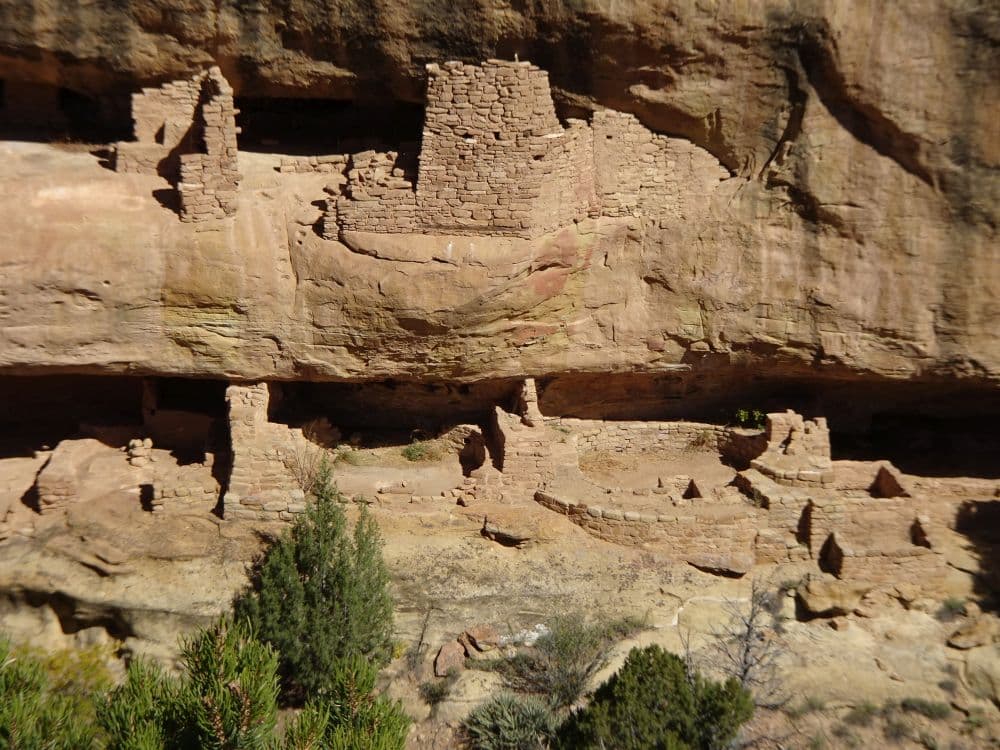
What can you expect on a visit to Mesa Verde?
We visited in late fall when the main areas of the park were about to close. Thus we missed the opportunity to take a ranger tour to see the cliff dwellings close up. The visitor center at the main entrance is open year round. The cliff dwellings and archeological digs are at higher altitudes and thus are not safe for travel in winter months.
We ended up taking a driving tour of the park, and stopping at various locations where the archeological digs are open to the public. Pull-off areas along the park road offer great views of the cliff dwellings across the valley from where we stood. The overlook spots allow for multiple visitors to view the dwellings. We encountered many smaller, unmarked cliff dwellings as we drove on the park road. Other stops allow for up-close exploration of sites like the Sun Temple, which we were able to walk around.
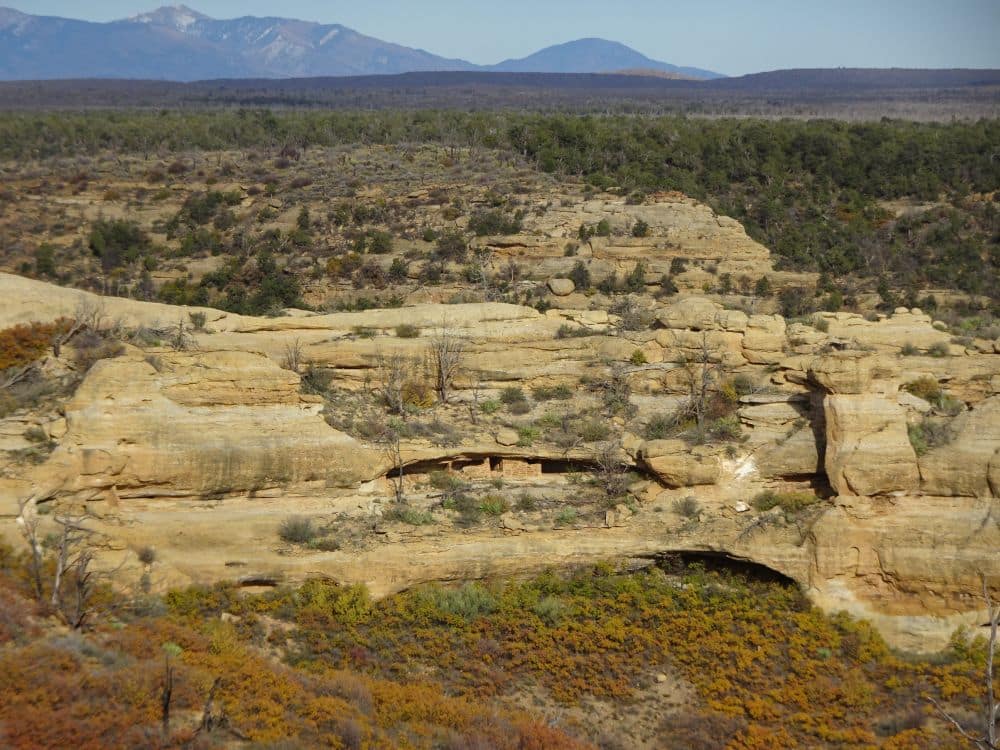
A stop at Park Point, the highest spot in this park, offers stunning views of the Four Corners (four states all in view) area. Paved walking paths (somewhat steep) allow for handicapped friendly (not totally accessible) access to the views at this elevation.
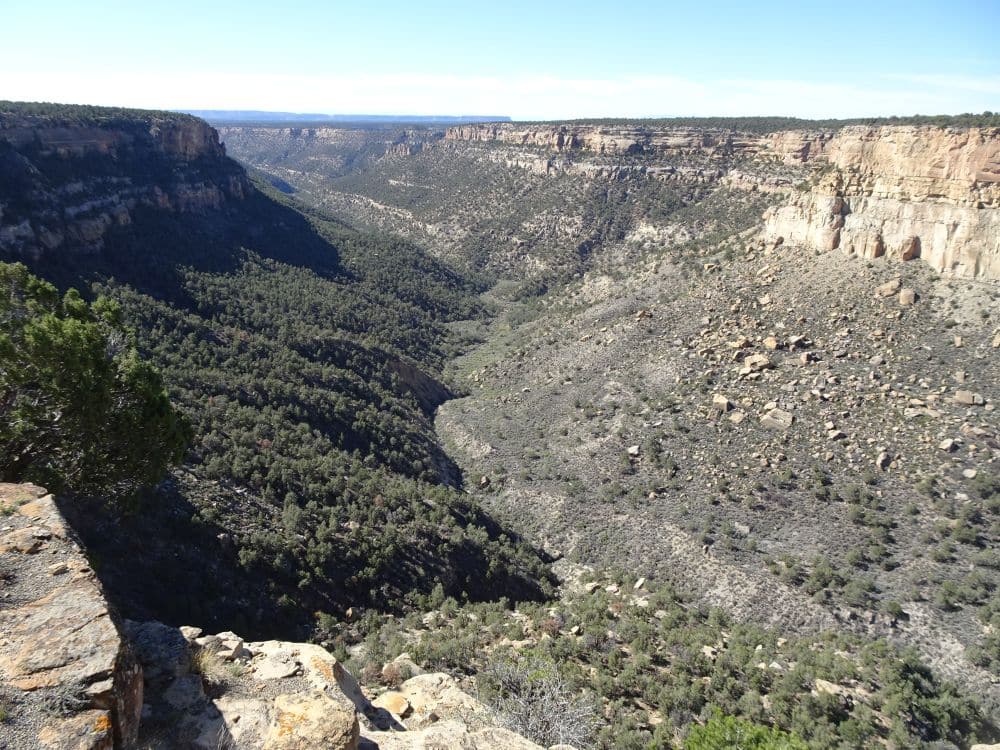
The interpretive signage at the enclosed archeological dig sites is insightful, allowing visitors to better grasp the true significance of what these digs have revealed of life in this area over a thousand years ago. Additional interpretive signs that have been contributed by present-day Native Americans impress on visitors the sacred connection between the builders of this community and present-day Native American tribes.
Those tribes with a special connection to Mesa Verde include the Pueblos of New Mexico: Taos, Picuris, Sandia, Isleta, Ohkay Owingeh, Santa Clara, San Ildefonso, Nambe, Tesuque, Jemez, Cochiti, Pojoaque, Santo Domingo, San Felipe, Santa Ana, Zia, Laguna, Acoma, and Zuni. Also included are the Navajo, Ute, Hopi, and Ysleta del Sur Pueblo tribes.
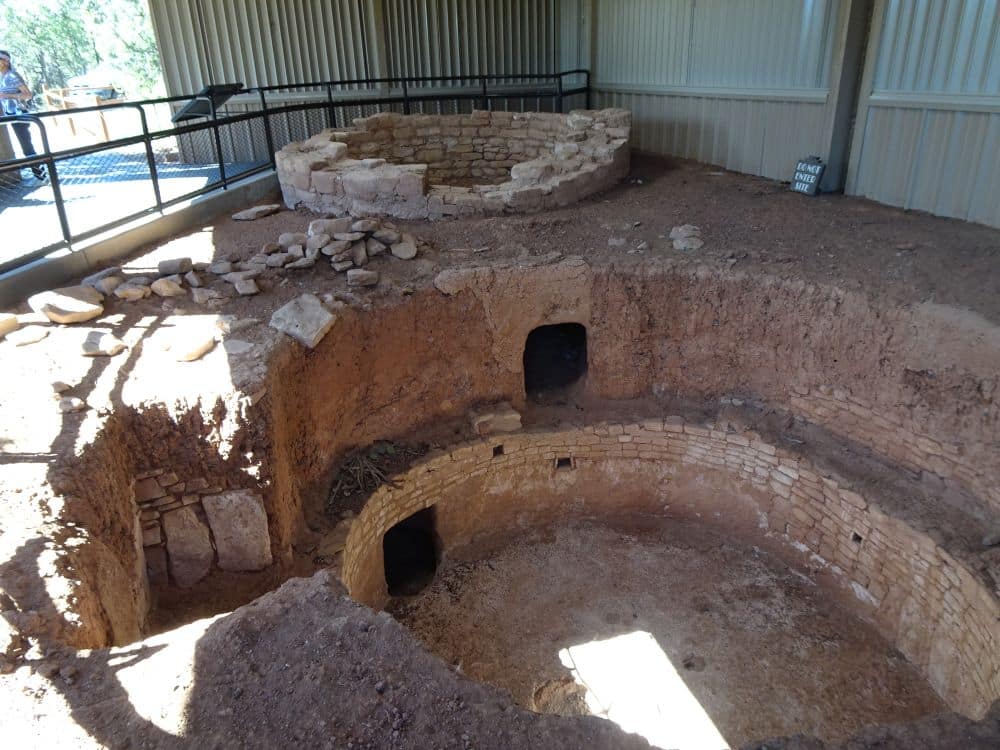
Is Mesa Verde worth visiting?
If mountain scenery, archeology, history, and mountain trails sound great, then you should plan to visit here. We had not planned on stopping at Mesa Verde but when we realized where we were (on an extended trip through the west) we found a place across the road from the park to camp and spent two days exploring the archeological digs, walked around the Sun Temple, and took time to view the multiple cliff dwellings visible from the park road. We would have spent at least another day or two if more of the park had been open when we visited.
Book accommodations near Mesa Verde National Park.
We would have greatly enjoyed taking the ranger tours of the cliff dwellings. Regardless, simply driving on the park road was eye-opening – amazing views, stunning scenery, and reminders of the fragile ecosystem within and around the park. Massive areas of burned trees bear witness to the threat of fire in this area and the need to protect the archeological sites within the park.
Tips for visiting Mesa Verde
The road through the park is quite steep and winding. Make sure your vehicle’s brakes are in good condition! We visited at the end of the season. In warmer months food and beverage are available at various locations in the park but these were not open when we visited.
The sites we stopped at were paved for the most part. Visitors taking the tour of the cliff dwellings will need sturdy hiking shoes, hats (the sun is quite strong) and water.
Some of the ranger-guided tours of cliff dwellings (May to October) may involve things like climbing ladders and/or crawling through narrow tunnels. If that prospect doesn’t fase you, they’re definitely worth doing, but these tours are also very popular so book them ahead. Tickets are available at this website, but are only released for sale two weeks before the ticket date. Sales open at 8 in the morning MST, and they sell out fast.
Book a private tour with guide for the day.
Or this self-guided audio driving tour.
This 2-week group hiking tour includes Mesa Verde and two other UNESCO sites: Yellowstone and the Grand Canyon.
We stopped in Durango, CO at Whitewater Park while in this area and enjoyed a great walk on a rail trail that follows the Animus River. We would have taken a bike ride on the trail if we had had more time. The downtown park abutting the river is a great viewing spot for kayak races.
Where is Mesa Verde?
Mesa Verde National Park, CO 81330
The park entrance is along Highway 160, between the towns of Cortez and Mancos, Colorado; take the Mesa Verde National Park exit. Mesa Verde is about 35 miles (a 40-minute drive) west of Durango, CO.
Parking is free. No campers allowed inside the park other than at designated campgrounds (open seasonally). RVs are permitted on the park road. There is a parking lot where you are required to leave your towed camper. Detach and leave your camper at the designated parking area. There is a fee for camping.
No public transportation is available. Seasonal campgrounds in the park have limited (15) full hookups available – reservations are recommended. A private campground with full hookups and basic cabins is directly across the road from the park entrance.
For more information about Mesa Verde, its opening hours and admission fees, see its official website.
Have you been to Mesa Verde? If so, do you have any additional information or advice about this UNESCO World Heritage site? Please add your comments below!

